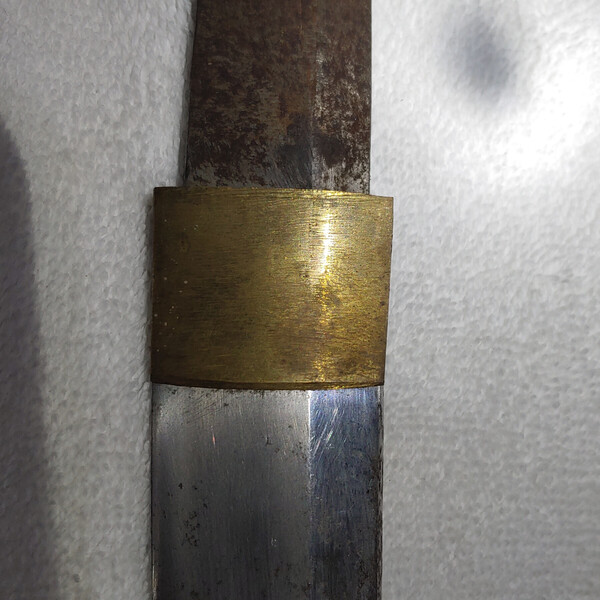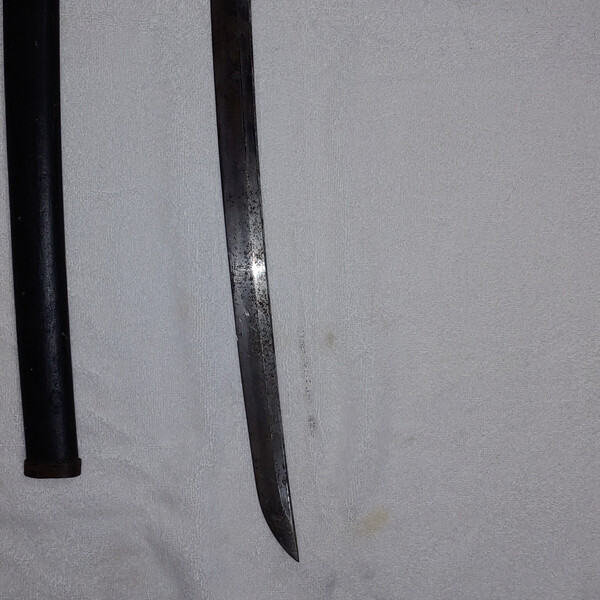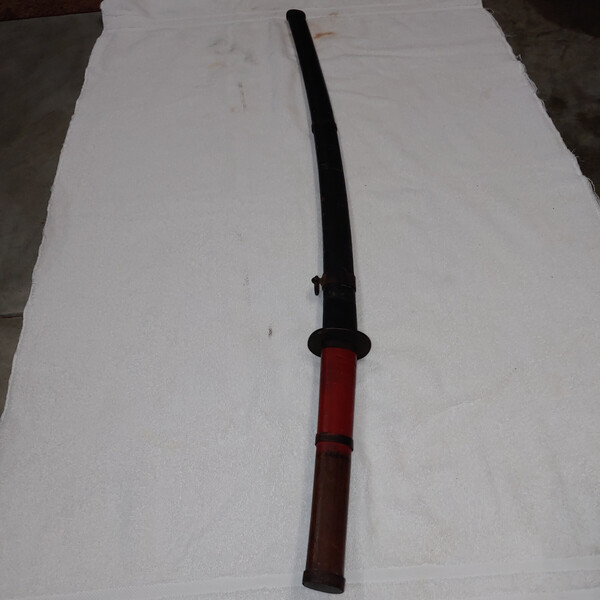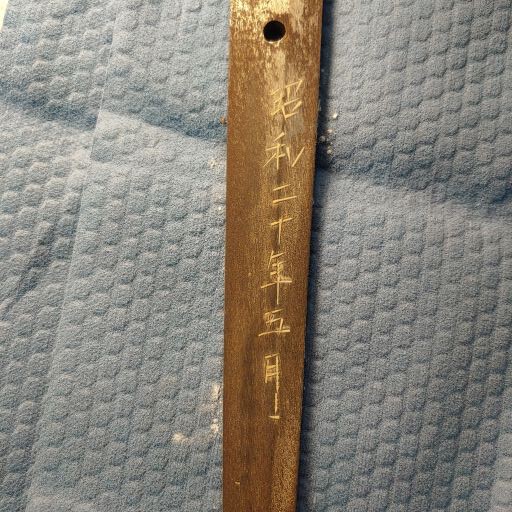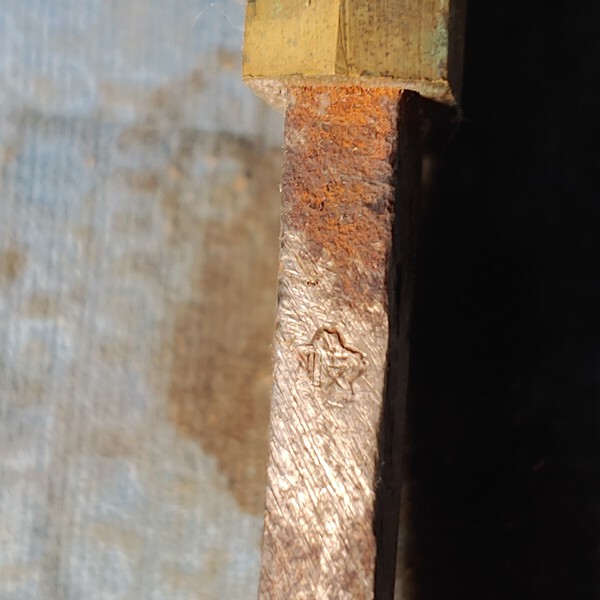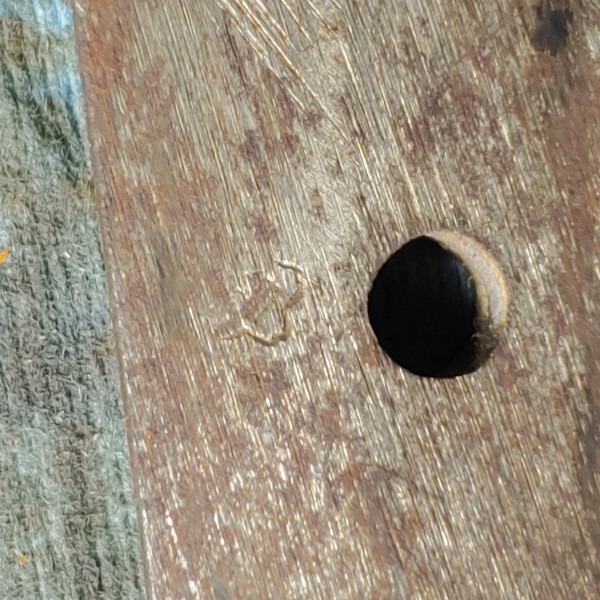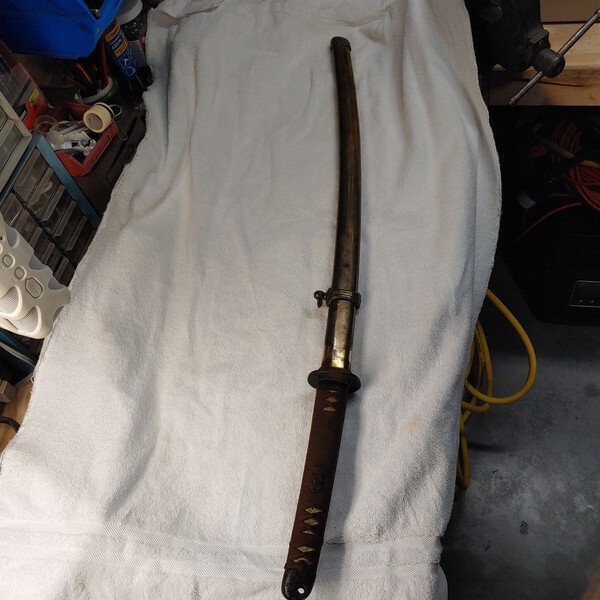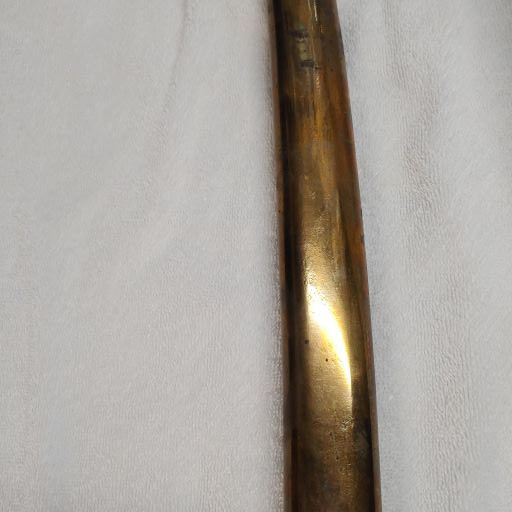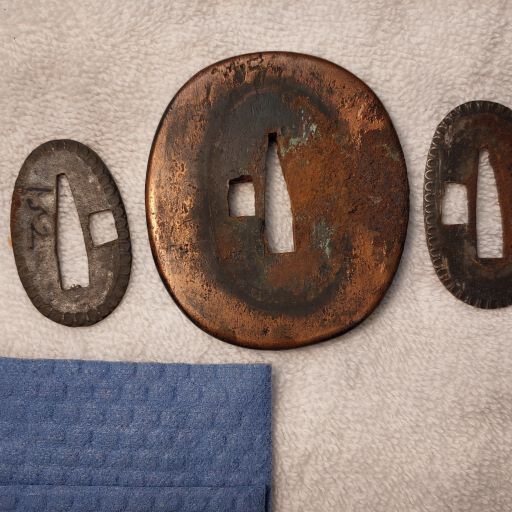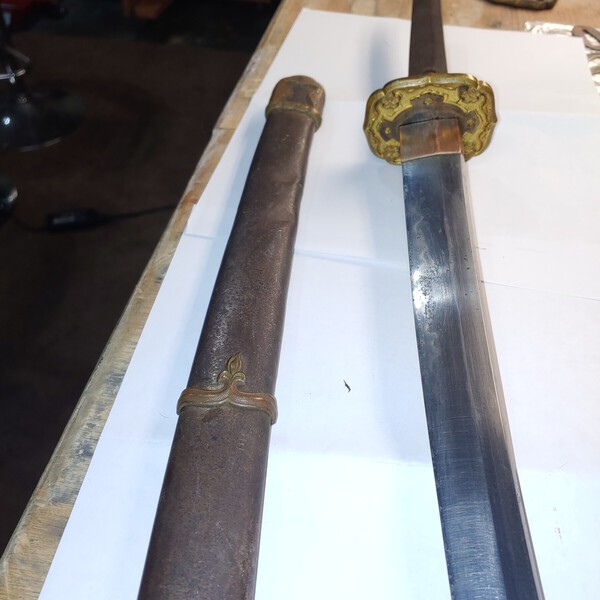
Cire69
Members-
Posts
13 -
Joined
-
Last visited
Content Type
Profiles
Forums
Events
Store
Downloads
Gallery
Everything posted by Cire69
-
translation Tang Translation help request
Cire69 replied to Cire69's topic in Translation Assistance
-
translation Tang Translation help request
Cire69 replied to Cire69's topic in Translation Assistance
-
translation Tang Translation help request
Cire69 replied to Cire69's topic in Translation Assistance
Thank you all for your input. I have uploaded some more pictures to hopefully help answer some of the questions. -
I have had this sword in my collection for several years. I got it from a friend who's father had in for as long as he (the son) could remember. My initial impression was this was a "tourist" type sword but I figured if I had the translation of the kanji it might lead to a better understanding of where it came from and what it might actually. There are no other markings that I have found. The koshirae is a simple wooden tsuka and saya with plan steel rings and a plane tsuba. Thanks you!
-
Shin Gunto Type 3 tang kangi translation help
Cire69 replied to Cire69's topic in Translation Assistance
Gotcha Bruce! I though this Type 3 being built so late in the Japanese war effort might have the koshirae more similar to the version listed as a "Last Stage Type" on the Ohmura- Study sight http://ohmura-study.net/754.html As for the Saku I was referring to Yoshihide (Ito Nobuyoshi), I should have better described that sentence with blade smith...I was not very clear on that...my apologies. Thanks! Eric- 10 replies
-
- showato
- translation
-
(and 1 more)
Tagged with:
-
Shin Gunto Type 3 tang kangi translation help
Cire69 replied to Cire69's topic in Translation Assistance
Haha, I feel special! Thanks Bruce for the reference material links...I will certainly check it out. I've been trying to find out some information on the Saku but there seems to be little information available. Yoshihide (Ito Nobuyoshi). The type 3 seems to be a bit of a strange hybrid being as late in the war as it was produced. Other then the "bronzing" of the saya...which certainly may have come later by a collector unless this was a special order of some kind...it has the earlier type 3 tsuka but not the lacquered wrap. Does have the cherry blossom fuchi not the plan stamped and the saya and fittings are of an earlier model (regardless of the plating treatment). It doesn't have the dust collar but the Kuchi-gane also doesn't have a provision for one...so it appears this piece was not made to have one. The Chūsō is plan and not with an ornate button like the earlier versions. -Eric- 10 replies
-
- showato
- translation
-
(and 1 more)
Tagged with:
-
Shin Gunto Type 3 tang kangi translation help
Cire69 replied to Cire69's topic in Translation Assistance
Thank you Mark!- 10 replies
-
- showato
- translation
-
(and 1 more)
Tagged with:
-
Shin Gunto Type 3 tang kangi translation help
Cire69 replied to Cire69's topic in Translation Assistance
Thank you Mark, I appreciate your translation. What might I be missing on the year translation...I'm new to trying to understand kanji and dating. I got the showa (1926) and it appeared to be the 20th year. I'm guessing I added the 20 years to the 1926 and didn't actually count 20 years FROM 1926...which would have been 1945. I'm learning as I go. Thank you for the Smith translation as well.- 10 replies
-
- showato
- translation
-
(and 1 more)
Tagged with:
-
Hello all! I just purchased my 1st Type 3 "Late War" Officers Shin Gunto for my personal collection. This is a pretty nice piece. It was claimed to be "unmolested" and "as found", after receiving it I believe it. It had the original mekugi in it that I'm 99.9% confident had never been removed since the swords assembly. So after removing them and inspecting the tang I was greeted by a nice surprise of kangi (both sides) and arsenal stamps. So I've been trying to decipher the markings and I could use some help. I think I might be close on the date but the "math" doesn't add up, so I'm not understanding something correctly. On the other side of the tang I have not been able to translate the markings. It has two Gifu-in-sakura stamps and a painted serial number ( 396...if I translated correctly). I believe the date to say Showa 20th year, 5th month...but the 20th year of showa would be 1946 and that's after the war so I'm guessing I'm missing something. Thank you!
- 10 replies
-
- showato
- translation
-
(and 1 more)
Tagged with:
-
Thank you very much Thomas! I appreciate that great bit of information on the markings!
- 12 replies
-
- 1
-

-
- manufacture
- gunto
-
(and 1 more)
Tagged with:
-
Bruce, No there are no stamps on the nakago mune. Just what was on the one side of the tang and the paint/markings on the other....which I'm guessing is the remnants of a serial number? -Eric
- 12 replies
-
- manufacture
- gunto
-
(and 1 more)
Tagged with:
-
Thank you all for your time and input. I have put together a few other pictures. I will apologize in advance for the pictures of the blade, my lighting does not show the detail I had hoped. I purchased the gunto without a Tsuka. I was very surprised by the patina on the tang and that there was still painting on it since it didnt come with one (tsuka). The blade is not is great polish but doesn't have too much deap pitting from rush. I most likely will never have it polished, I'm ok with it's imperfections and care more about its origin story...so to speak. Thank you all! Eric
- 12 replies
-
- manufacture
- gunto
-
(and 1 more)
Tagged with:
-
Hello! I've done my best to translate the writing on the tang of my recently purchased Shin Gunto type 98. For a double check, since this is my 1st time trying to decipher kanji any confirmation would be welcome. It appears there is a SEKI stamp at the top, a kokuin saying Ozawa Kanehisa and I believe the signature to read, Ozawa Kanehisa Saku...but I'm not 100% sure I got everything on that translation. Does anyone have any information on Ozawa Kanehisa? I know this blade is non-traditional but has anyone heard of his style of blade maxing....I assume western steel and oil quenched. If anyone has any insights I would love to hear them. This is for my personal collection and I do not plan on reselling it. Thank you!
- 12 replies
-
- 1
-

-
- manufacture
- gunto
-
(and 1 more)
Tagged with:


